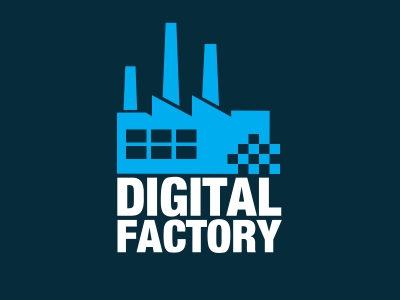That's it. Your company has started its own Digital Factory. It was the logical choice: after having a couple of Agile projects here and there, you needed to go at scale. So 50 teams will start tomorrow in this so-called "Digital Factory". How can you make it successful?
In our experience most of it lies on how you accept or reject projects that apply to join the Factory. In this article we propose 4 rules that will set your initiative for success:
- Each Project Demonstrates High Business Value Projects Only
- On-Site Customer in Direct Contact with End-users Mandatory
- Functional autonomous teams that sit together
- Have a continuous improvement program in place
Those four practices will allow you to create a highly productive integrated Digital Factory.
1. Each Project Demonstrates High Business Value Projects Only
You don't want to go Digital on a project that aims to repaint your flower pots. To enter your digital factory a project must demonstrate its business value. If the project intends to save employees’ time, demonstrate how you will redeploy those employees. Study the impacts on your end-user’s behaviour you're looking for. Find whether there are alternative paths to provide those impacts. Then decide on a first experiment that intends to deliver tangible results in under month. Present it to its end-user and prepare to pivot.
2. On-Site Customer in Direct Contact with End-users Mandatory
This approach avoids common issues found in Agile projects: the "proxy" product owner without any decision power, the "absent" one that is supposed to “spend 30% of his time on the project”, or the "never-been-on-the-floor" one that takes uninformed decisions for his end-user. If the business unit is not ready to be involved with the development team at every step in the process, better use a traditional approach for their project.
At one of our clients every Business Unit can submit a project to enter the Digital Factory. One of the conditions is that the Business Unit provides a full-time employee dedicated to the project. This employee should be in contact with the end-user frequently - no less than once a month.
3. Functional autonomous teams that sit together
You have a critical project to build. The business is involved, and is ready to include end-users at all stage of the project. Now you need a team to deliver. Antoine de Saint-Exupéry said "If you want to build a ship, don't drum up people to collect wood and don't assign them tasks and work, but rather teach them to long for the endless immensity of the sea."
Focus on providing a good environment to that team and let them work the best way to deliver. Get them to deliver a product at least every month. Check that they continuously improve. Then you don't need to tell them how to work together, which methodology to use. Give them an Agile Coach and let them create their own! Every month you can check if they have produced enough value. Every month you have the opportunity to adjust your budget.
For teams to be able to demonstrate value every month they must have access to the whole product development. From discovery to delivery, from backend to frontend. If the team has an external dependency on someone, consider having him be part of the team. Or having him teach the team and review its work.
Do I need to pledge for project teams that sit together? You know deep down that offshoring an Agile project doesn't work - or is at least far more complicated to make it "work". Why would you launch a critical project across multiple locations? Space is a defining factor for successful Digital Factories.
4. Have a continuous improvement process in place.
Just like creating a new startup, creating a Digital Factory can be very exciting. Results often come at short term. However don't lose sight that you're in for the long run. Every now and then pause, think and act differently. Scrum proposes to run a 4 hours retrospective every month - see if that schedule works for you.
Another one of our clients had started a very successful Digital Factory. After 6 months the value delivered was outstanding. However the team that was piloting the whole initiative started to fade. People were on edge, leaving the department or working long hours. It was time for them to pause, stop their activities and reflect on how they wanted to make it sustainable.
Congratulations on starting your journey. Are our Golden Rules applicable to your context? Do you have others that come in mind? Leave us a comment and we'll get in touch!



